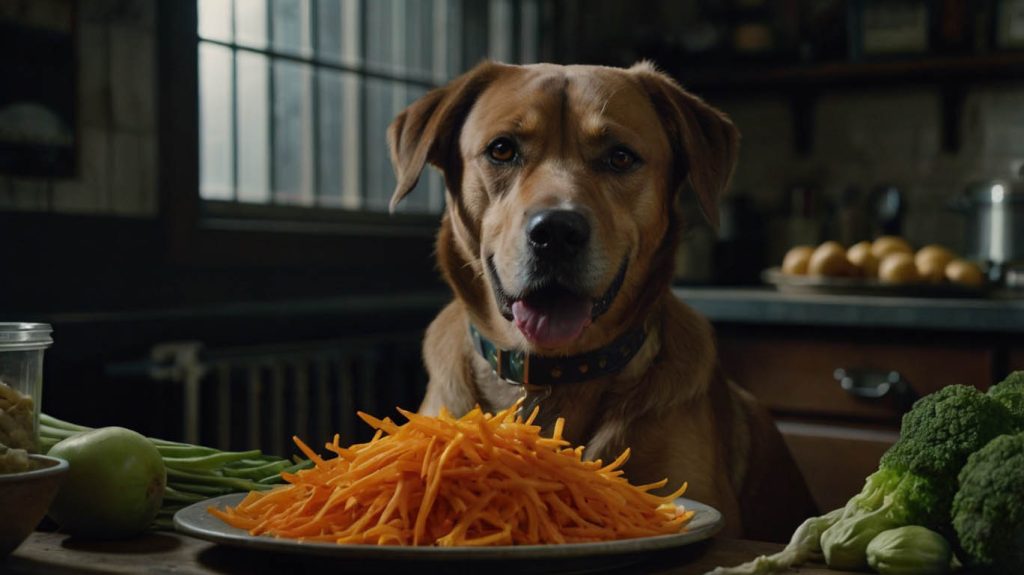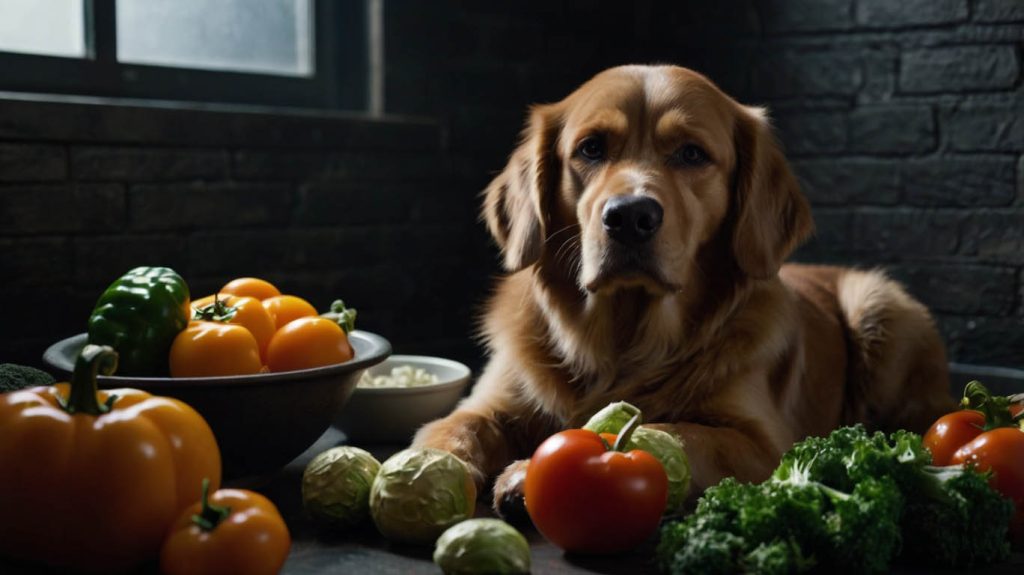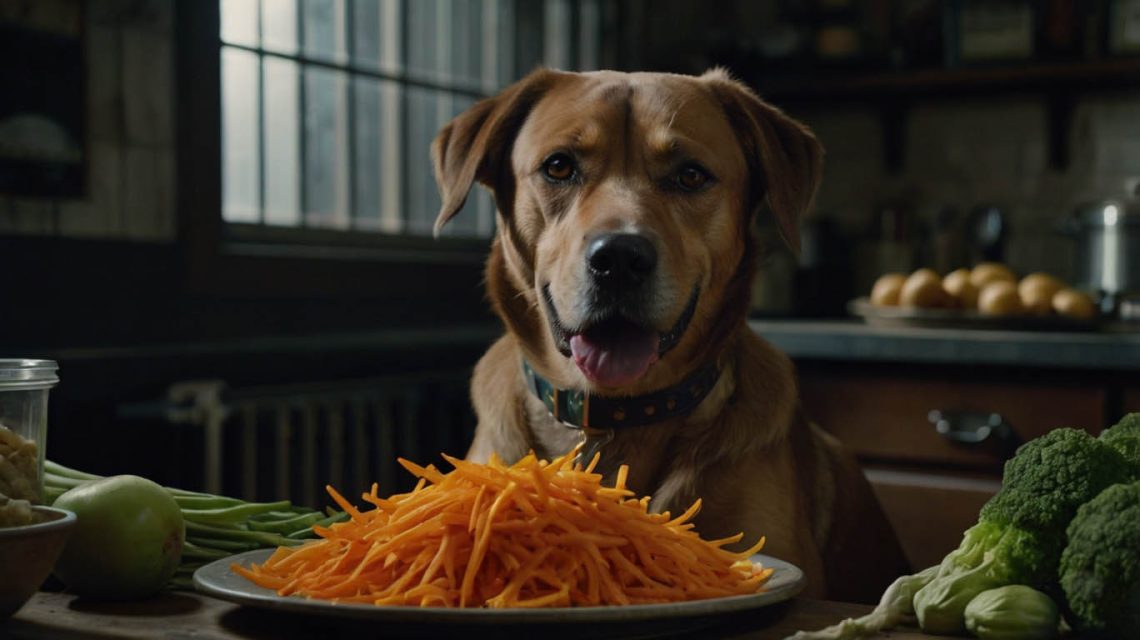What All Vegetables Can Dogs Eat: The Ultimate Guide for Pet Parents
Megan looked at her beloved Labrador, Leo, with a loving but concerned eye. Leo had a passion for food that was only matched by his tendency to gain weight. The vet had gently suggested cutting back on his calorie-dense biscuits in favor of healthier treats. Megan stood in front of her open refrigerator, looking at the vibrant array of produce, and found herself asking a question many caring pet owners face: what all vegetables can dogs eat?
This question is a fantastic starting point for improving your dog’s health. Integrating vegetables can be a wonderful way to provide low-calorie snacks packed with nutrients. However, the world of “human food” for dogs is filled with confusion and potential dangers. What’s a superfood for you could be toxic for your canine companion.
Consequently, this definitive guide is designed to be your trusted resource. We will explore the amazing benefits of veggies, provide a clear, vet-reviewed list of safe options, and highlight the dangerous ones you must avoid. Therefore, you can confidently and safely answer the question, “what all vegetables can dogs eat?” and start sharing healthy new treats with your best friend.
The “Why”: The Amazing Benefits of Vegetables for Dogs
Before we jump into the specific lists, it’s important to understand why you should even be asking, “what all vegetables can dogs eat?” When offered correctly, vegetables can be a powerhouse of health benefits.
- Weight Management: Most dog-safe vegetables are low in calories and fat but high in fiber. This makes them the perfect treat for dogs like Leo who need to manage their weight. The fiber helps them feel full without the extra calories.
- Packed with Nutrients: Vegetables are loaded with vitamins (like A, C, and K), minerals, and powerful antioxidants that support your dog’s immune system, vision, and overall cellular health.
- Hydration Boost: Many veggies, such as cucumbers, have a very high water content, which is a great way to help keep your dog hydrated, especially during warmer months.
- Mental Enrichment and Dental Health: The crunchy texture of vegetables like carrots and celery can be mentally stimulating for your dog and can even help scrape away plaque from their teeth as they chew.
A Critical Rule: Always remember the 90/10 rule. Treats of any kind, including vegetables, should make up no more than 10% of your dog’s total daily caloric intake. The other 90% must come from their complete and balanced dog food.

The Vet-Approved “Yes” List: What All Vegetables Can Dogs Eat?
This is the list you’ve been waiting for. Here are some of the best, safest, and most popular vegetables you can share with your dog.
Carrots: The Classic Crunchy Treat Dogs Can Eat
Carrots are often the go-to answer when owners ask, “what all vegetables can dogs eat?” They are packed with beta-carotene, which the body converts into Vitamin A, essential for healthy vision, skin, and immune function. Their satisfying crunch is great for your dog’s teeth. You can serve them raw (in large, supervised chunks) or cooked.
Green Beans: The Low-Calorie Diet Staple Dogs Can Eat
Plain green beans are a fantastic, low-calorie treat. They are full of fiber, which aids digestion, and contain important vitamins like K and C. Because they are so low in calories, they are an excellent choice for dogs on a weight-loss journey.
Broccoli: The Nutrient-Packed Floret Dogs Can Eat (in Moderation)
Broccoli is a nutritional giant, loaded with Vitamin C and fiber. You can offer your dog small, cooked or raw florets. However, broccoli should always be given in small quantities. It contains compounds that can cause mild gastric irritation if a dog overindulges.
Sweet Potatoes: The Fiber-Rich Superfood Dogs Can Eat
Cooked sweet potatoes are a wonderfully healthy choice. They are an excellent source of dietary fiber, which promotes a healthy digestive system, and they are filled with vitamins A, B6, and C. Crucially, you must always serve sweet potatoes cooked (steamed, baked, or boiled) and plain, with no seasonings. Raw sweet potato is difficult for dogs to digest.
Pumpkin: The Digestive Soother Dogs Can Eat
When looking for an answer to “what all vegetables can dogs eat” to help a sensitive stomach, 100% pure canned pumpkin is the star. (Do NOT use pumpkin pie filling, which is loaded with sugar and spices). Its high soluble fiber content can help with both diarrhea and constipation.
Cucumbers: The Ultimate Hydrating Snack Dogs Can Eat
Cucumbers are an amazing, guilt-free snack, especially for overweight dogs. They are over 95% water and contain vitamins K and C, making them a refreshing and crunchy treat that won’t pack on the pounds.
Celery: The Teeth-Cleaning Veggie Dogs Can Eat
Celery is another low-calorie, crunchy option that can help freshen your dog’s breath and clean their teeth. It contains vitamins A, B, and C. Just be sure to chop it into bite-sized pieces to prevent any choking hazard from the stringy parts.

The Danger Zone: What All Vegetables Can Dogs NOT Eat?
This list is just as important, if not more so, than the safe list. Never feed your dog the following vegetables.
Onions, Garlic, and Chives: The Toxic Allium Family
This entire family of plants is toxic to dogs in all forms—raw, cooked, powdered, or dehydrated. They contain compounds that cause oxidative damage to a dog’s red blood cells, which can lead to life-threatening anemia. This is the most important “no” when asking “what all vegetables can dogs eat?”
Wild Mushrooms
While plain, store-bought mushrooms might be okay in a pinch, the risk from wild mushrooms is catastrophic. Many wild varieties are extremely poisonous, and telling them apart is a job for an expert. It’s safest to have a “no mushrooms” rule for your dog.
Rhubarb and Unripe Tomatoes
Rhubarb leaves and the green parts of a tomato plant (stems and leaves) contain substances that are toxic to dogs, causing everything from stomach upset to nervous system issues.
How to Prepare Vegetables for Your Dog Safely
Preparation is key to ensuring vegetables are a safe and healthy treat.
- Wash Thoroughly: Always wash vegetables well to remove any pesticides or dirt.
- Cook for Digestibility: Cooking vegetables (steaming or boiling is best) breaks down their cell walls, making the nutrients inside much easier for your dog to absorb.
- Keep it PLAIN: This is a golden rule. Always serve vegetables plain. Do not add salt, butter, oil, onions, garlic, or any other seasonings.
- Chop Appropriately: Cut all vegetables into bite-sized pieces appropriate for your dog’s size to prevent choking.
A Case Study Resolved: How Megan and Leo Found Their Veggie Bliss
Let’s return to Megan and her slightly pudgy Lab, Leo. Armed with this new knowledge, Megan started a new treat routine. She swapped out his high-calorie biscuits for crunchy baby carrots and refreshing cucumber slices. She began mixing a spoonful of pure canned pumpkin into his dinner to help him feel more full.
The results were fantastic. Leo adored his new, flavorful treats and didn’t seem to miss his old biscuits at all. Over the next few months, combined with his regular walks, he trimmed down to a healthier weight. Megan felt wonderful knowing she had found the perfect answer to “what all vegetables can dogs eat” and was enriching his life in a healthy, safe way.
The Final Verdict: A Rainbow of Healthy Possibilities
So, what all vegetables can dogs eat? The answer is a wonderful variety! From carrots and green beans to pumpkin and celery, these natural foods can be a fantastic part of your dog’s diet when chosen carefully and served correctly.
Your dog’s health and happiness are in your hands. Always consult with your veterinarian before making significant changes to their diet. What are your dog’s favorite safe and healthy veggies? Share your ideas in the comments below!


